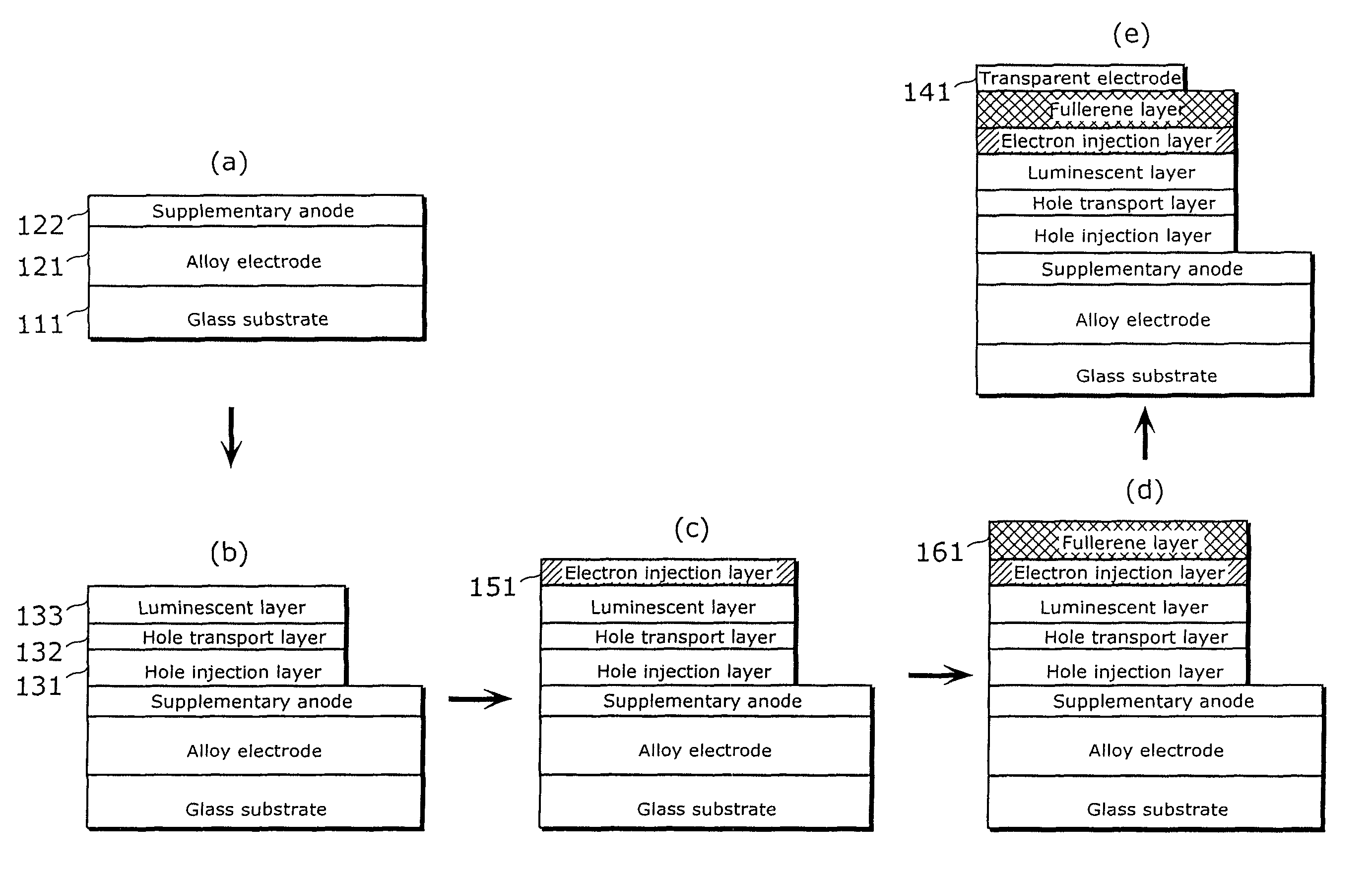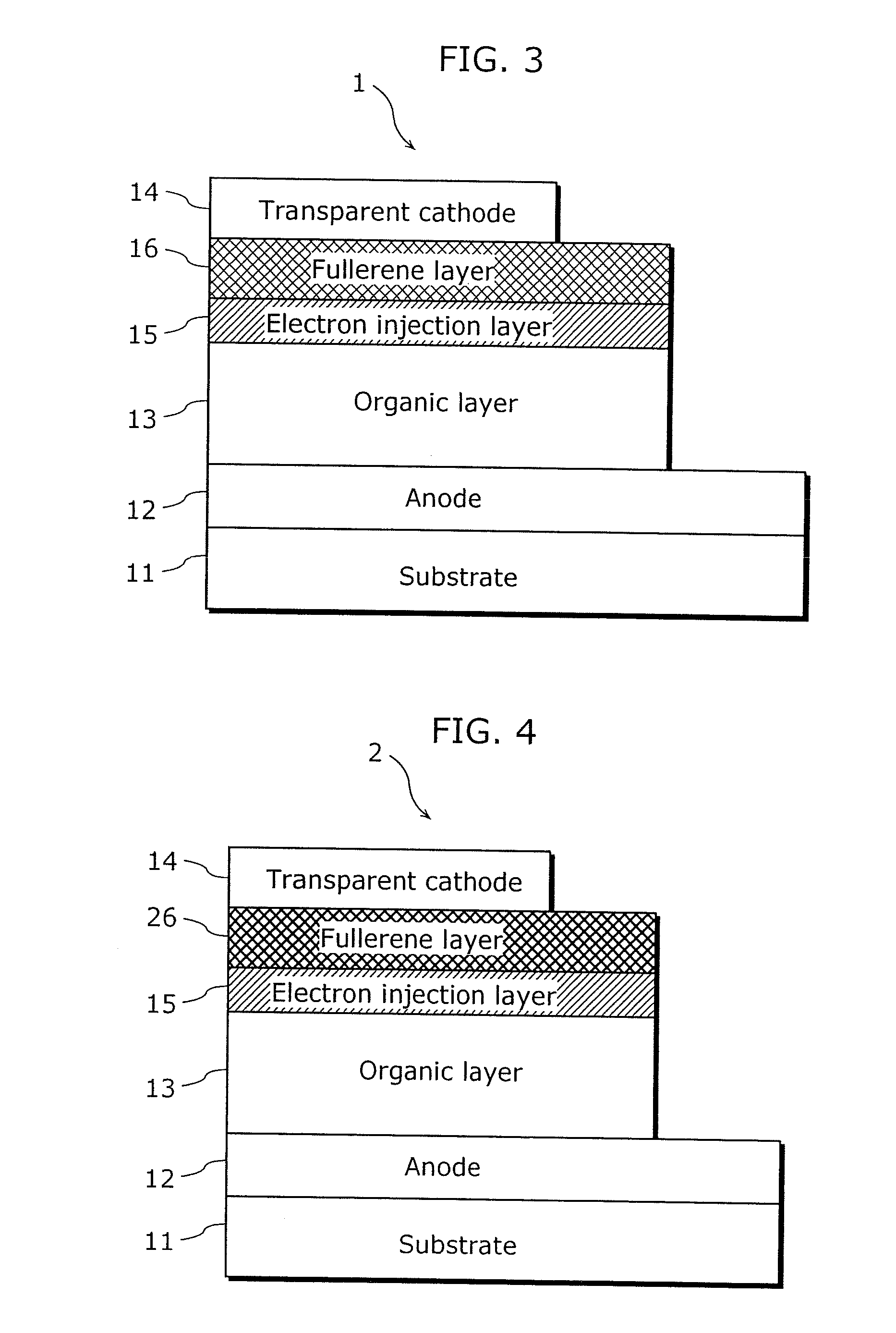Organic electroluminescence element
a technology of electroluminescence elements and organic materials, applied in the field of organic electroluminescence elements, can solve the problems of instability of elements, deterioration of luminescence efficiency, rise of drive voltage, etc., and achieve the effect of high transparency
- Summary
- Abstract
- Description
- Claims
- Application Information
AI Technical Summary
Benefits of technology
Problems solved by technology
Method used
Image
Examples
example 1
[0077]FIG. 5 is a process diagram describing the manufacturing method for the organic EL element in example 1 of the present invention. First, a 100-nm-thick, 97% molybdenum and 3% chrome alloy electrode 121 was formed on the surface of a glass substrate 111 (using flat glass manufactured by Matsunami Glass Ind. Ltd.) by sputtering. Then, the alloy electrode 121 was patterned into the anode shape by photolithography. Next, as a supplementary anode 122, a 60-nm-thick indium tin oxide electrode was formed on the surface of the patterned alloy electrode 121 by sputtering, and patterned into a predetermined anode shape by photolithography (FIG. 5(a)). The patterned alloy electrode 121 and supplementary anode 122 each have the function of an anode.
[0078]Next, the following three layers were formed as the organic layer. First, a 60-nm-thick hole injection layer 131 was formed by forming polyethylenedioxythiophene (PEDOT: Baytron P AI 4083 manufactured by TA Chemical Co.) on the surface of...
example 2
[0082]In the manufacturing method for the organic EL element in example 2 of the present invention, the organic EL element was formed in the same manner as in example 1 except that the fullerene layer was formed by changing the thickness of the fullerene layer 161 described in FIG. 5, from 10 nm to 20 nm.
example 3
[0083]In the manufacturing method for the organic EL element in example 3 of the present invention, the organic EL element was formed in the same manner as in example 1 except that the fullerene layer was formed by changing the thickness of the fullerene layer 161 described in FIG. 5, from 10 nm to 50 nm.
PUM
| Property | Measurement | Unit |
|---|---|---|
| thickness | aaaaa | aaaaa |
| thickness | aaaaa | aaaaa |
| thickness | aaaaa | aaaaa |
Abstract
Description
Claims
Application Information
 Login to View More
Login to View More - Generate Ideas
- Intellectual Property
- Life Sciences
- Materials
- Tech Scout
- Unparalleled Data Quality
- Higher Quality Content
- 60% Fewer Hallucinations
Browse by: Latest US Patents, China's latest patents, Technical Efficacy Thesaurus, Application Domain, Technology Topic, Popular Technical Reports.
© 2025 PatSnap. All rights reserved.Legal|Privacy policy|Modern Slavery Act Transparency Statement|Sitemap|About US| Contact US: help@patsnap.com



